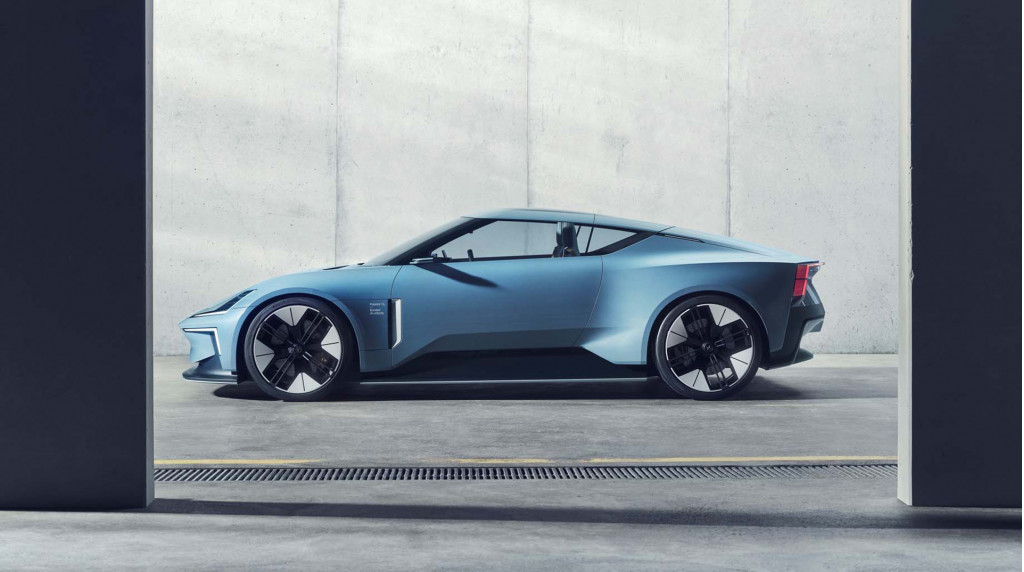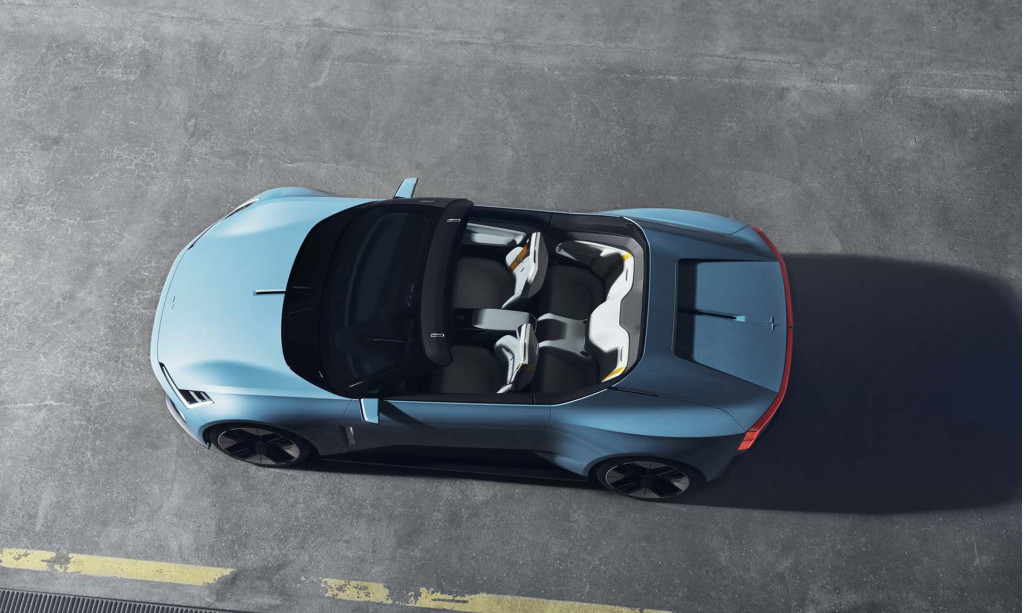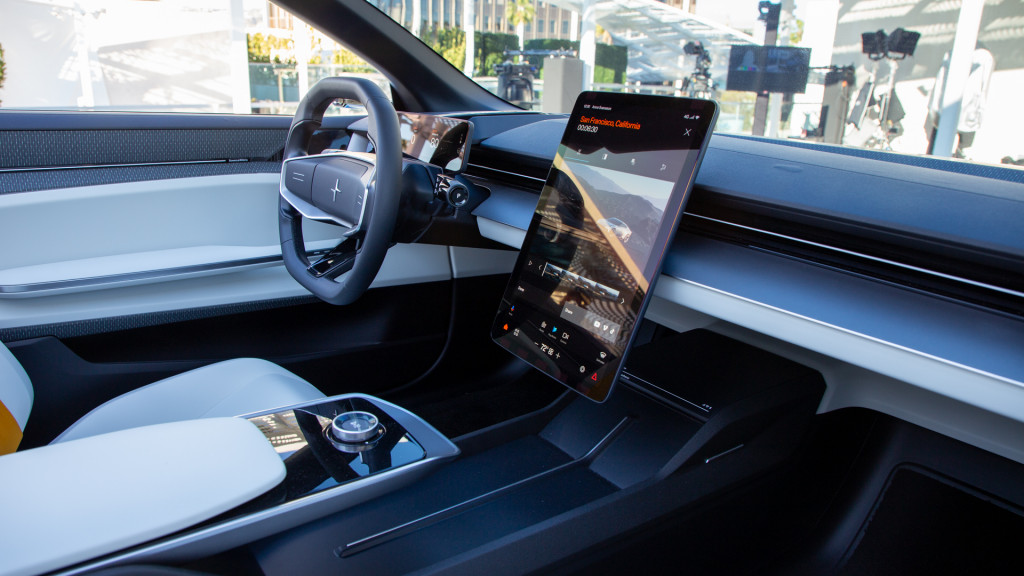Sure, electric SUVs will form the backbone of the electrification strategy for most automakers. But those utilitarian vehicles don’t inspire the same joie de vivre that you get from a sports car. That’s why we were excited to see the latest concept from Polestar, the O2 (pronounced like the oxygen molecule), go the top-down route.
The O2 is a 2+2 hard-top convertible, and Polestar says that the styling shown on this concept as well as the Polestar 5 (formerly the Precept concept) provide a good idea of what to expect from the company’s products going forward.
Simply put, it moves away from its Volvo roots in search of its own, more angular signature.

Polestar O2 concept
Unlike the Precept, which was confirmed late last year to become a production model as the Polestar 5 in 2024, the O2 exists as a one-off concept for now without future plans to put it into production. However, Gregor Hembrough, head of Polestar Americas told GCR last December that “Polestar wants to be a Porsche competitor, in design, performance, and innovation.”
To really go after Porsche, the company would need some kind of sports car or roadster in the vein of the 911.
We hope that it’s this car, because the O2 is absolutely gorgeous.

Polestar O2 concept
Polestar calls the O2 the “hero car for our brand” and it\’s certainly styled as such. We had a chance to see the concept in Los Angeles before its debut, and the impressions from the photos hold up in person. The design is striking, with a sporty profile and sharply angled fenders front and rear. The rear is especially attractive, with the rear pillars stretching backwards over the decklid and almost touching the wide taillights that stretch across the top of the trunk lid. There are also small text snippets located around the car’s different features that feel like a Virgil Abloh tribute in miniature.
Powertrain details were lacking, but we were able to confirm that the concept also sits on the new Polestar-exclusive platform that underpins the Polestar 5. In that vehicle the wheelbase is 122.0 inches long, but it has been shortened down to 109.9 inches long for the O2. The “foot garages” from the Polestar 5 to provide more foot room for rear passengers have been removed, but otherwise the platform is the same (just shorter). That length puts the O2 more in the realm of the Lexus LC 500 (113.0 inches) than the Porsche 911 (96.5 inches).
Polestar is also using the O2 to debut some new sustainability features, with mono-material thermoplastics used to make many of the trim pieces. Recycled polyester was also used for all of the interior’s “soft components,” such as the foam, adhesives, and 3D knit fibers. In the chassis, Polestar kept different grades of aluminum separate and thus allowed the high-grade aluminum to maintain its integrity.

Polestar O2 concept
The 15-inch touchscreen display uses the same next generation infotainment found in the Polestar 5, and representatives said more details on that system would be announced at a later date. But the O2’s most exciting new piece of technology comes in the form of an autonomous drone that slides out from behind the rear seats and down a small track on the decklid. From there, it can be launched even when the car is driving, thanks to an aerofoil that raises up to create an area of negative pressure.
This isn’t the first time we’ve seen a drone integrated into a concept. Audi’s AI:Trail concept had drone headlights that could detach and illuminate the road ahead when off-roading. But the O2’s drones serve less of a functional purpose and more of a social one. The drone can automatically follow the car at speeds of up to 56 mph and the driver can choose between different automated paths for filming the desired type of sequence. Videos can be edited and shared directly from the O2’s center display.
The prospective timeline for a potential O2 production vehicle could be far off; Polestar has stated that it will introduce the Polestar 3 later this year and it will go on sale in early 2023, followed by the Polestar 4 and the Polestar 5, slated to debut in 2023 and 2024, respectively. Given that the concept shares a platform with the Polestar 5, its arrival will likely coincide or follow the new flagship sedan. That puts its timeline behind that of the Tesla Roadster, even with that car being pushed to next year at the least.

L to R: Polestar 5, Polestar 4 and Polestar 3
But in the near future, the O2’s splashy arrival has us more excited for the Polestar 3. We’ve only seen that vehicle under camouflage and though that car will ride on the Volvo SPA2 platform, Polestar says its styling will follow what’s been shown on the Precept and the O2. Fingers crossed.









